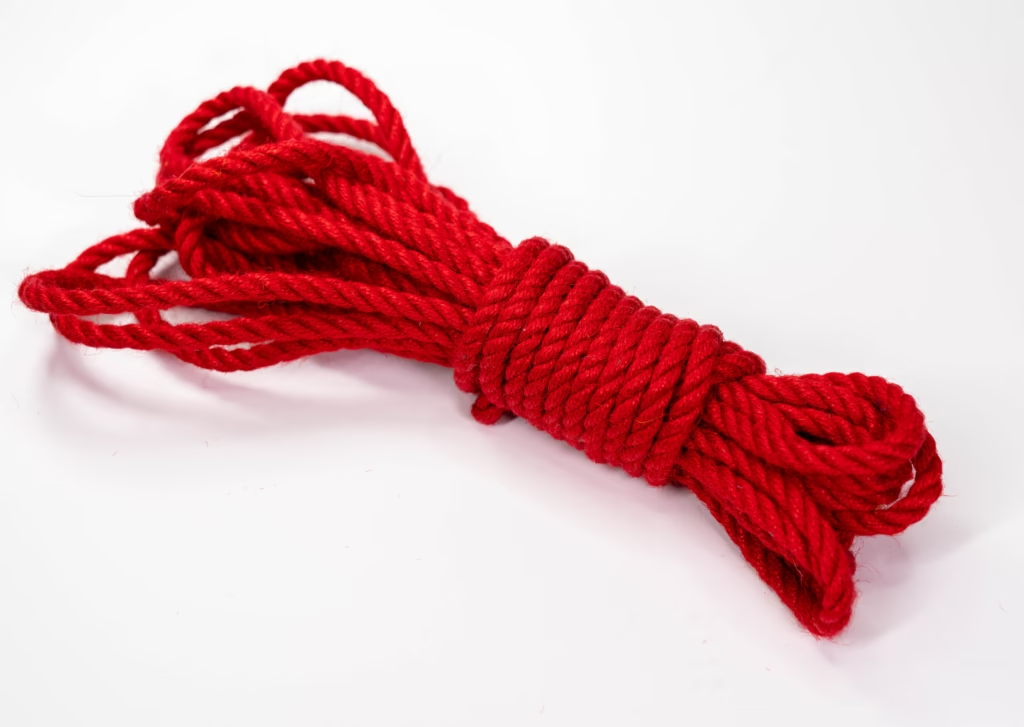Tending the Thread: Rope Care and Storage for Your Shibari Journey
Shibari is more than just knots and tension—it’s an art form built on trust, mindfulness, and connection. At the heart of this practice lies your rope. Whether you’re an experienced rigger or just starting your journey, proper rope care is essential for both safety and longevity. At Wickedly Woven, where every strand is crafted with care and eco-conscious values, we believe your rope deserves the same reverence as your practice.
Why Rope Care Matters
Your rope is a living tool. Natural fiber ropes like jute and hemp—favored for their grip, texture, and traditional appeal—respond to how you treat them. Well-maintained rope is not only safer and more pleasant to use, but it also performs better during ties and withstands the passage of time with grace.
Step-by-Step Rope Care
1. Conditioning Your Rope
Fresh rope often needs breaking in. For our natural jute and hemp lines, we recommend:
- Beeswax & Jojoba Oil Blend: Our signature Wickedly Woven conditioning balm provides just the right balance of protection and flexibility. Gently warm a small amount in your hands and run it along the rope, working it in evenly.
- Whipping the Ends: Prevent fraying by whipping or knotting the ends of your rope. We offer custom finishes with every order, but you can refresh them as needed.
2. Regular Cleaning
Natural fiber ropes don’t love water, but occasional spot cleaning is okay.
- Spot-Clean with a lightly damp cloth—never soak.
- Avoid Detergents, as they can break down fibers and oils.
- Air Dry completely before storing. Damp rope is vulnerable to mold and mildew.
3. Burning Off Fuzzies
Over time, ropes can develop “fuzzies”—tiny fibers that rise to the surface. To keep them sleek:
- Use a rope burner or a lighter (with extreme care!) to singe off the fuzz.
- Always work in a ventilated space and never leave the flame in one spot for too long.
Storage: Keep Your Rope Sacred
Just as you wouldn’t leave a cherished instrument out in the rain, your rope deserves a respectful home.
- Cool, Dry, and Dark: Store your rope in a breathable cotton bag or wooden box away from moisture, heat, and direct sunlight.
- No Plastic: Natural rope needs to breathe. Plastic traps moisture and can encourage rot.
- Hang or Coil: Loosely coil your rope or hang it on a hook to avoid creasing and maintain its shape.
Pro Tips for Rope Longevity
- Rotate Your Rope: Use different ropes in your kit evenly to avoid wearing out one strand too quickly.
- Inspect Often: Before every session, check for signs of fraying, thinning, or damage.
- Retreat Periodically: Reapply your conditioning balm every few months or whenever the rope feels dry.
At Wickedly Woven, we craft more than just rope—we weave intention, respect, and sustainability into every strand. By caring for your rope, you honor not only the material but also the energy and craft behind it.
Whether tying for art, intimacy, or meditative focus, may your rope always remain a faithful companion on your Shibari journey.
